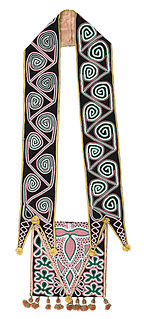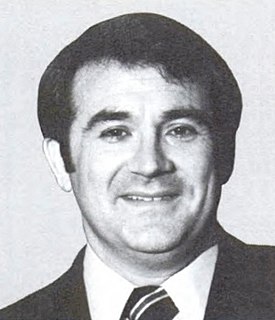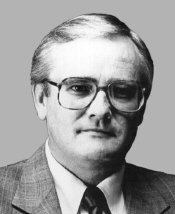
As general terms, Indian Territory, the Indian Territories, or Indian country describe an evolving land area set aside by the United States Government for the relocation of Native Americans who held aboriginal title to their land. In general, the tribes ceded land they occupied in exchange for land grants in 1803. The concept of an Indian Territory was an outcome of the 18th- and 19th-century policy of Indian removal. After the Civil War (1861–1865), the policy of the government was one of assimilation.
Creek mythology is related to a Creek Native American tribe who are originally from the southeastern United States, also known by their original name Mvskoke, the name they use to identify themselves today. Mvskoke is their name in traditional spelling. Modern Muscogees live primarily in Oklahoma, Alabama, Georgia, and Florida. Their language, Mvskoke, is a member of the Creek branch of the Muskogean language family. The Seminole are close kin to the Mvskoke and speak a Creek language as well. The Creeks were considered one of the Five Civilized Tribes. After the Creek War many of the Creeks escaped to Florida to create the Seminole.

Whitesburg is a town in Carroll County, Georgia, United States. The population was 596 at the 2000 census.
Tiwa is a group of two, possibly three, related Tanoan languages spoken by the Tiwa Pueblo, and possibly Piro Pueblo, in the U.S. state of New Mexico.
Alabama is a Native American language, spoken by the Alabama-Coushatta tribe of Texas. It was once spoken by the Alabama-Quassarte Tribal Town of Oklahoma, but there are no more Alabama speakers in Oklahoma. It is a Muskogean language, and is believed to have been related to the Muklasa and Tuskegee languages, which are no longer extant. Alabama is closely related to Koasati and Apalachee, and more distantly to other Muskogean languages like Hitchiti, Chickasaw and Choctaw.
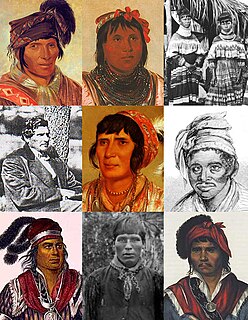
Indigenous peoples of the Southeastern Woodlands, Southeastern cultures, or Southeast Indians are an ethnographic classification for Native Americans who have traditionally inhabited the Southeastern United States and the northeastern border of Mexico, that share common cultural traits. This classification is a part of the Eastern Woodlands. The concept of a southeastern cultural region was developed by anthropologists, beginning with Otis Mason and Frank Boas in 1887. The boundaries of the region are defined more by shared cultural traits than by geographic distinctions. Because the cultures gradually instead of abruptly shift into Plains, Prairie, or Northeastern Woodlands cultures, scholars do not always agree on the exact limits of the Southeastern Woodland culture region. Shawnee, Powhatan, Waco, Tawakoni, Tonkawa, Karankawa, Quapaw, and Mosopelea are usually seen as marginally southeastern and their traditional lands represent the borders of the cultural region.
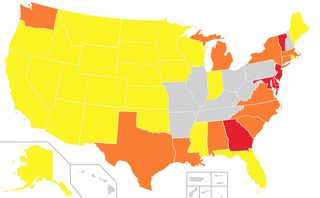
State-recognized tribes are Native American Indian tribes, Nations, and Heritage Groups that have been recognized by a process established under assorted state laws for varying purposes. With increasing activism by tribal nations since the mid-20th century to obtain federal recognition of their tribal sovereignty, many states have passed legislation to recognize some tribes and acknowledge the self-determination and continuity of historic ethnic groups. The majority of these groups are located in the Eastern US, including the three largest state-recognized tribes in the US, viz. the Lumbee Tribe of North Carolina, the Miami Nation of Indiana and the United Houma Nation of Louisiana, each of which has several thousand tribal members.

The Coushatta are a Muskogean-speaking Native American people now living primarily in the U.S. states of Louisiana, Oklahoma, and Texas.

Ysleta del Sur Pueblo is a Puebloan Native American tribal entity in the Ysleta section of El Paso, Texas. Its members are Southern Tiwa people who had been displaced from Spanish New Mexico in 1680-1681 during the Pueblo Revolt against the Spaniards.

The Coushatta Tribe of Louisiana is one of three federally recognized tribes of Koasati people. They are is located in Allen and Jefferson Davis Parishes, Louisiana. The tribe hosts an annual pow wow during the second weekend in July.

The Laguna Pueblo is a federally recognized tribe of Native American Pueblo people in west-central New Mexico, USA. The name, Laguna, is Spanish and derives from the lake located on their reservation. Originally, this body of water was the only lake in what is now the state of New Mexico, and was formed by an ancient dam that was constructed by the Laguna people. After the Pueblo Revolt of 1680-1696, the Mission San José de la Laguna was erected by the Spanish at the old pueblo, and finished around July 4, 1699.

The Muscogee (Creek) Nation is a federally recognized Native American tribe based in the U.S. state of Oklahoma. The nation descends from the historic Creek Confederacy, a large group of indigenous peoples of the Southeastern Woodlands. Official languages include Muscogee, Yuchi, Natchez, Alabama, and Koasati, with Muscogee retaining the largest number of speakers. They commonly refer to themselves as Este Mvskokvlke. Historically, they were often referred to as one of the Five Civilized Tribes of the American Southeast.
The Alabama–Quassarte Tribal Town is both a federally recognized Native American tribe and a traditional township of Muskogean-speaking Alabama and Coushatta peoples. Their traditional languages include Alabama, Koasati, and Mvskoke. As of 2014, the tribe includes 369 enrolled members, all of which live within the state of Oklahoma.
The Cachil DeHe Band of Wintun Native Americans of the Colusa Native Americans Community of the Colusa Rancheria is a federally recognized ranchería of Wintun Native Americans from central CaliforniaCalifornia Native Americans and Their Reservations: C.Archived February 5, 2009, at the Wayback Machine San Diego State University Library and Information Access. 2010 </ref>
The Grindstone Indian Rancheria of Wintun-Wailaki Indians is a federally recognized tribe and ranchería of Wintun and Wailaki Indians from northern California. As of the 2010 Census the population was 164.

The Pueblo V Period is the final period of ancestral puebloan culture in the American Southwest, or Oasisamerica, and includes the contemporary Pueblo peoples. From the previous Pueblo IV Period, all 19 of the Rio Grande valley pueblos remain in the contemporary period. The only remaining pueblo in Texas is Ysleta del Sur Pueblo, and the only remaining pueblos in Arizona are maintained by the Hopi Tribe. The rest of the Pueblo IV pueblos were abandoned by the 19th century.





